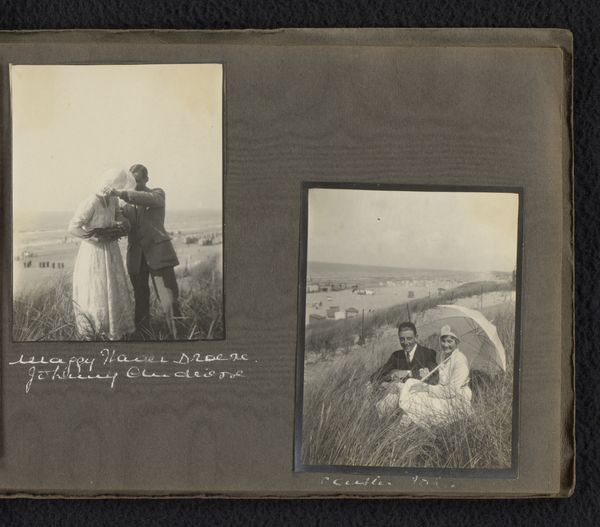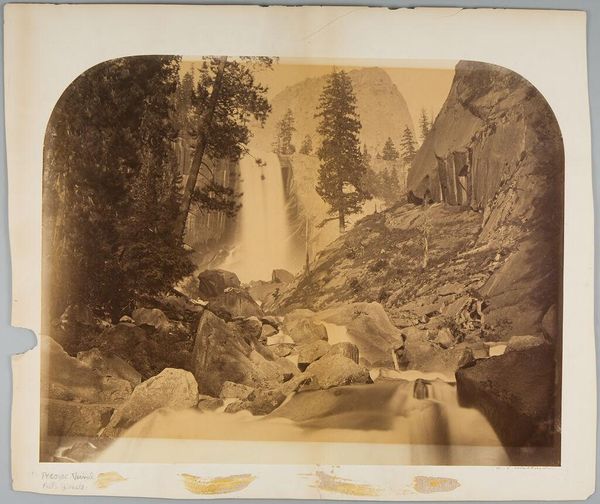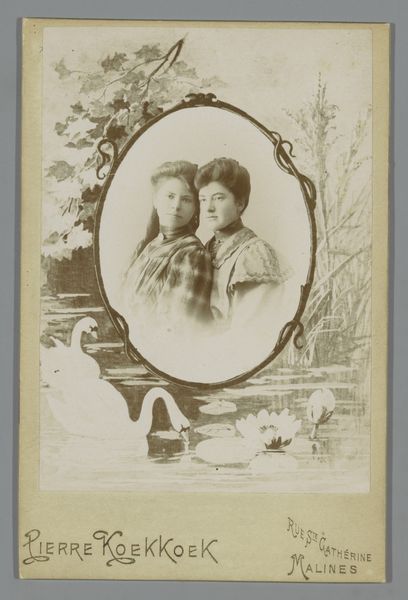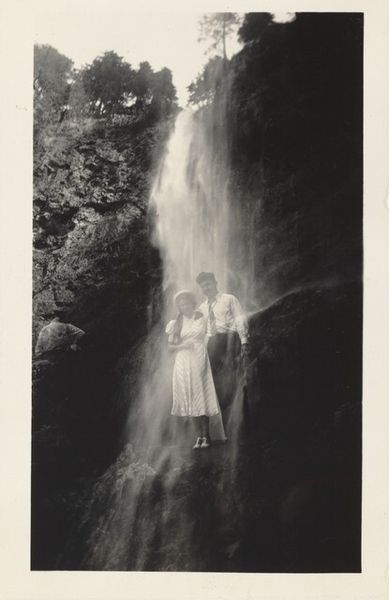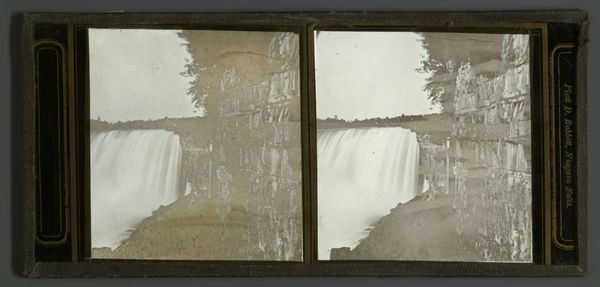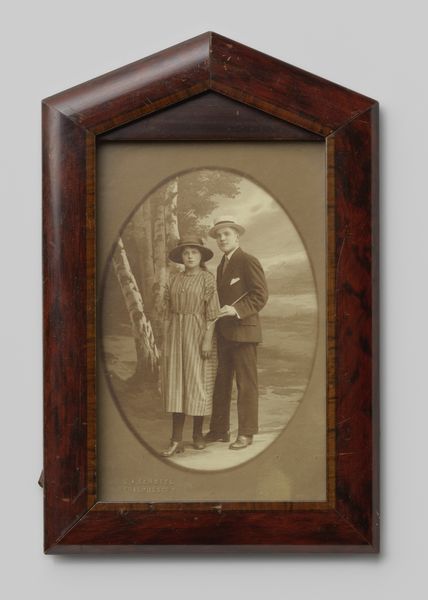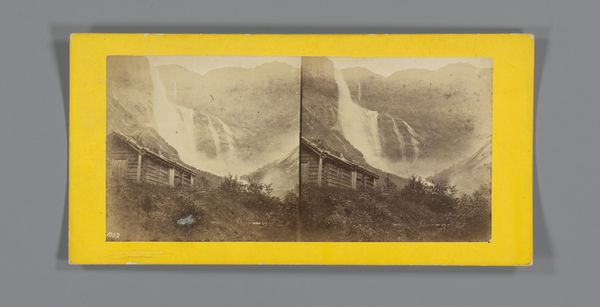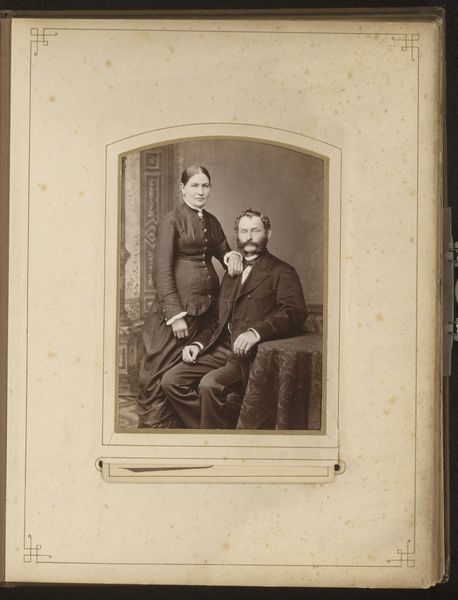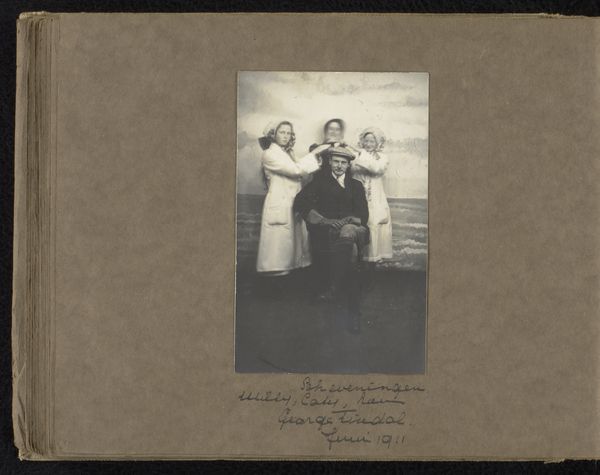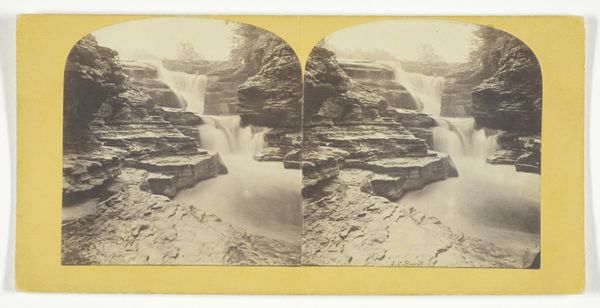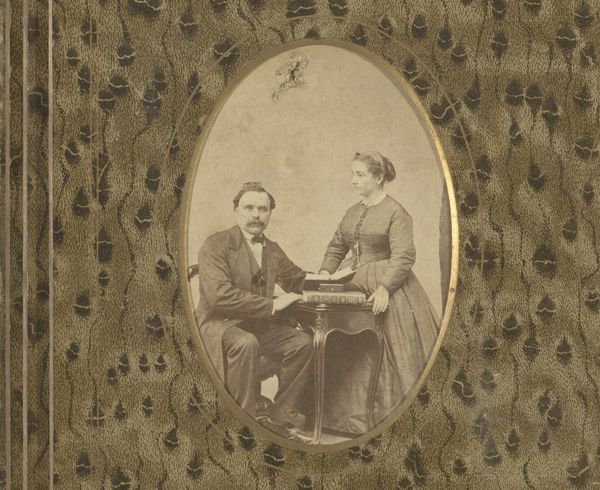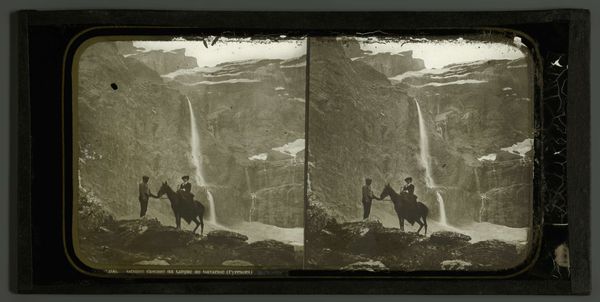
Dimensions: height 148 mm, width 203 mm
Copyright: Rijks Museum: Open Domain
Edward Davis captured this portrait of a family at Niagara Falls using the wet collodion process, a popular photographic technique of the mid-19th century. During this era, Niagara Falls was a popular tourist destination and a symbol of the American sublime. The family's formal attire speaks to the rigid social conventions of the time, highlighting the importance of appearances and respectability, while their presence in front of such a majestic natural wonder suggests a desire to connect with something larger than themselves. We can only guess at their class, as the frock coats and lace bonnets were aspirational attire for the rising middle class, yet unattainable for the working classes. This image reflects the growing accessibility of photography to the middle class, allowing them to create lasting memories and document their experiences. What stories might this image tell, of the sitters’ place in the American experiment? The falls can be seen as a symbol of power or freedom, or perhaps it is a reflection on the transient nature of life.
Comments
rijksmuseum over 1 year ago
⋮
Visiting the breathtaking Niagara Falls required wearing raingear. This family had itself portrayed twice by the ambrotypist: once with and once without raincoats in the exact same spot. The famous tourist attraction buzzed with photographic activity. Visitors and travellers were portrayed by all manner of photographers. And pictures of the Falls were for sale everywhere.
Join the conversation
Join millions of artists and users on Artera today and experience the ultimate creative platform.
